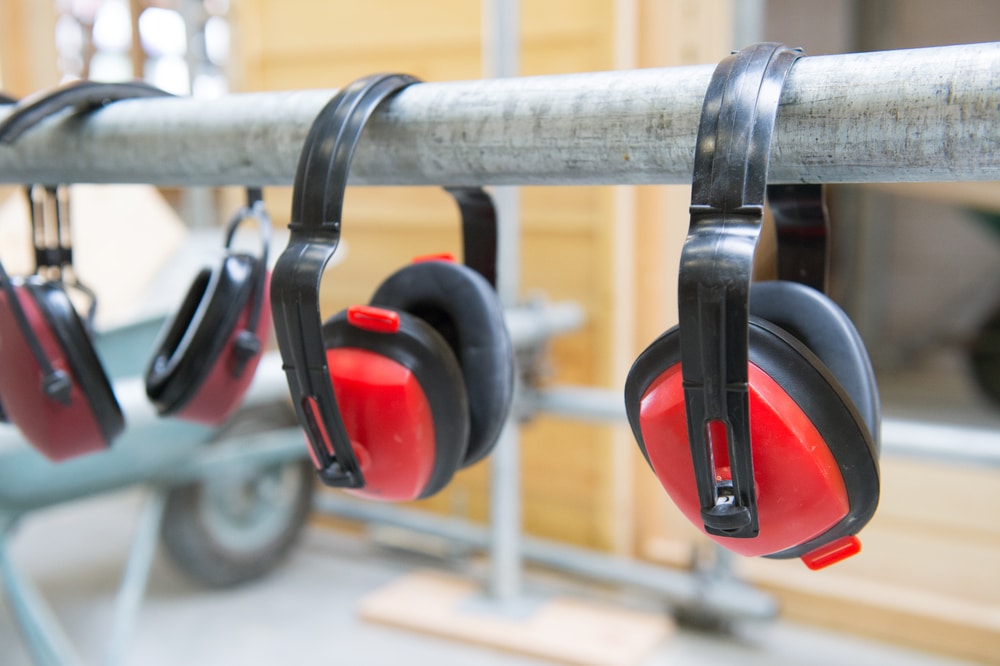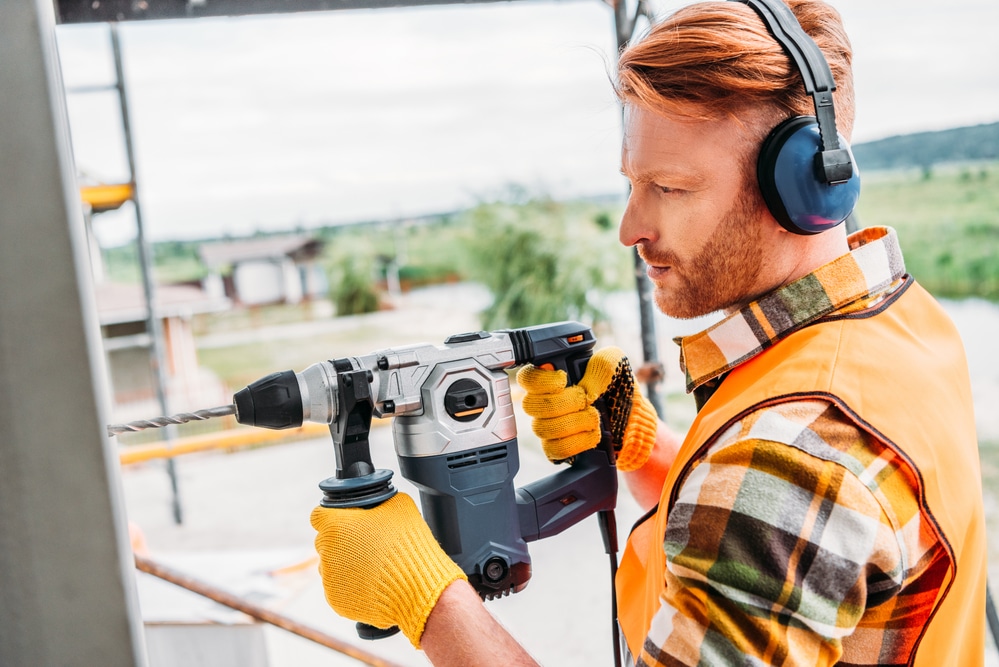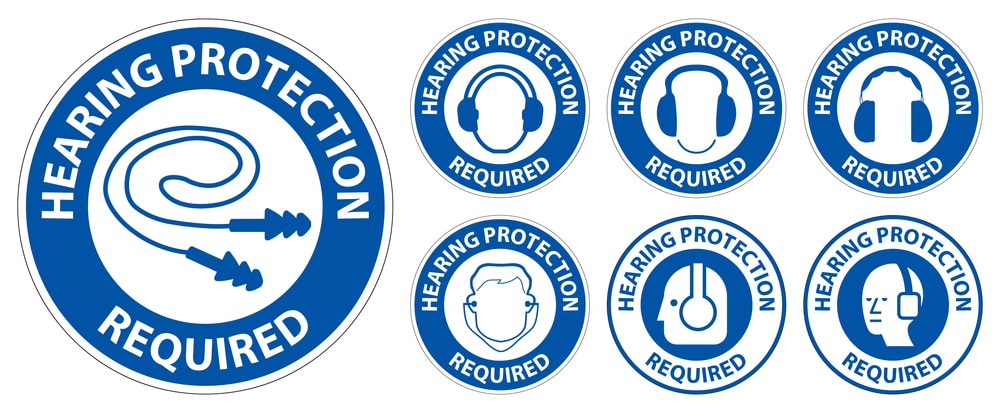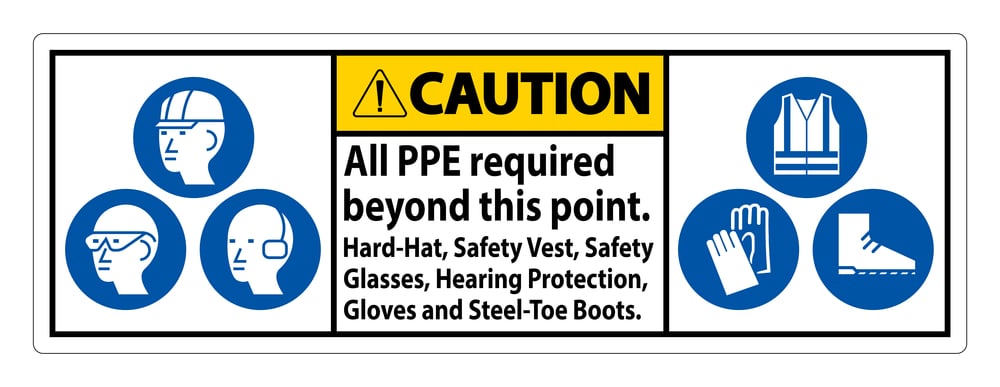The Importance of Baseline Audiometric Testing

It’s estimated that roughly one-fifth of Americans experience hearing loss at some point. Sometimes damage is unavoidable due to aging, but it can also be caused by exposure to extreme noise levels.
Certain work environments and job duties involve added exposure to loud noises, so employers are required by law to preserve workplace safety and provide workers with adequate protection to prevent long-term damage.
Because an employee’s hearing may be impacted by exposure to loud noise throughout their workday, appropriate procedures and protections are necessary to avoid long-term hearing loss. Thus, hearing conservation programs in the workplace aim to preserve workers’ long-term health.
We have a full training course if you need your employees to go through hearing conservation training.
Everyone Wants to Think They Hear Perfectly
For most adults, the last time they remember going through the process of having their ears checked was back in grade school. Therefore, most people would be totally unaware if their auditory abilities had worsened.
If most adults haven’t had their hearing tested since grade school, it’s probably time to test their ability to hear. As we age, it’s smart to establish a baseline so doctors will notice whenever our threshold begins to change.
Most people think they have great ears and are surprised to learn otherwise if an audiogram reveals they aren’t able to hear certain frequencies. Hearing loss is typically a gradual process and isn’t always easy to notice.

Why It’s Important
Hearing protection and hearing loss have a long and interesting history.
When ear damage goes unnoticed and is left untreated, people can become fatigued, irritable, or angry. Hearing loss is associated with cognitive decline, dementia, and negative health outcomes and can diminish one’s quality of life in many ways.
Being unable to hear can make communication a struggle and puts people at greater risk of accidents and depression. Yet it affects roughly 25% of adults over 60 and two-thirds of those over 70.
With age, our ears can become damaged due to exposure to loud noise and other hazards, such as ototoxic medications. When older adults don’t hear as well, their overall health tends to suffer.
Signs of Possible Hearing Loss
Because our ability to hear depends on different frequencies, it’s easy to not notice damage, which typically occurs as a gradual process over time.
Moreover, because we are naturally great adapters, people often cope in various ways to mask hearing loss, such as using context clues to compensate.
Some common signs that someone may be experiencing hearing loss include:
- Asking often for people to repeat themselves
- Raising the volume on different devices slowly
- Attempting to read lips and body language

Preventing Work-Related Hearing Loss
In some work environments, extended or sudden exposure to loud noise may impact the function of an employee’s outer ear, middle ear, or inner ear.
Due to the higher risks involved, employers must engage in a hearing conservation program for the safety of all employees who frequently face exposure to noises louder than 85 decibels.
OSHA Regulations
According to the regulations set forth by the United States Department of Labor’s Occupational Safety and Health Administration (OSHA), the regulatory agency dedicated to preserving American workers’ health and safety, employers are legally obligated to preserve and protect the health and well-being of their employees.
Per OSHA regulations, employers are required to include a hearing conservation program for all employees whose work exposes them to levels of noise that are potentially harmful (averaging 85 decibels throughout an 8-hour shift).
For reference, 85dB sounds similar to a diesel truck engine; 90dB resembles a power mower; finally, a farm tractor or a jet taking off each creates the sound of 100 dB. These sounds and noise levels are not uncommon in the American workplace.
Implementing a noise monitoring program is an important first step, and we have written about this previously.

Protect Your Business
For business owners, it’s important to not only remain compliant with federal health administration regulations for legal purposes but also to protect themselves in case a hearing loss claim is brought against them.
Without a pre-employment baseline test conducted before the employee joined the team, the employer would be held 100% liable for the damage. The consequences of such a scenario can be extremely costly for employers. Therefore, baseline hearing tests help protect employers from fraudulent claims.
Hearing Conservation Programs
A hearing conservation program in the workplace is required for employers to closely monitor staff members’ abilities in order to provide adequate protection, as well as prompt identification and treatment of any damage.
Conservation programs involve an initial or baseline audiometric exam, followed by regular, ongoing testing each year, and concluding with a last hearing test upon exit from the company to assess whether work-related noise has had an effect on the abilities of employees.
Ongoing testing is essential. First, potential employees must have their hearing checked with a baseline hearing test. The baseline audiogram is vital for accurate evaluation of future hearing tests.
Regular Testing for Workers
Ideally, employees should get an initial hearing test or a baseline audiogram, followed by future tests with each annual physical or bi-annual health check, along with any time their assignment will soon change to include intense or uncommon sounds.
Next, upon reassignment from a noisy area, and finally, at their employment’s termination.

Baseline Hearing Test at the Pre-Employment Stage
With the purpose of creating comparative results in the future, baseline testing is key to monitoring the auditory abilities of adults over time. Professionals will compare future test results to the initial level found during the baseline test, which should be conducted prior to employment.
Waiting even one month to do an initial audiogram will render it ineffective in determining if someone’s ears have been impaired by work-related exposure to loud noise.
For this reason, baseline hearing testing should be performed before employees begin work. Only then can audiologists and hearing aid specialists compare the results of each later test to reliably determine whether someone’s threshold has changed since their last exam.
Identifying Existing Damage with Baseline Hearing Tests
Conservation programs don’t just mandate when employees must get their baseline hearing test and future tests; they also exist to ensure that all personnel are using appropriate protective equipment.
It’s possible that some employees may be entering the workplace with existing mild, moderate, or severe hearing loss. When a new hire’s baseline hearing test indicates they have already experienced damage, it’s required that their former employer be notified.
It’s important in these instances for new employers to identify employees’ current hearing threshold in order to ensure any pre-existing damage isn’t worsened.
The purpose of a conservation program is to protect and accurately monitor employees’ abilities and in the case of existing damage, to identify, treat, and prevent additional loss of abilities from occurring.

Wrap-Up
Employers must closely monitor and protect their employees’ ability to hear. When decibel levels are extreme, they should initiate a conservation program with frequent audiograms.
For a baseline audiometry exam, an audiologist or hearing aid specialist evaluates someone’s ability to detect sounds played at varying frequencies and noise levels in order to determine where their hearing threshold levels lie.
Compared to the baseline test results and using them as a long-term reference point, an audiologist can more accurately determine whether someone’s ability to hear has declined over time.
At any age, knowing one’s own ability to hear is essential. When results compared to previous tests indicate damage, they will be able to notice whenever treatment options such as hearing aids may become helpful.
Frequently Asked Questions
What is an audiologist?
An audiologist is a medical professional trained in diagnosing and managing disorders related to auditory abilities and balance, among other neural functions.
What is the point of audiometry exams?
As we get older, it becomes necessary to get regular hearing tests. Getting your hearing checked twice a year helps to catch any signs of damage early before severe hearing loss has occurred.
Untreated hearing loss can be hazardous in the workplace – it’s best to get it checked regularly.
What is the purpose of a baseline audiogram?
A baseline hearing test aids in the evaluation of one’s ears over time. The baseline audio graph accurately pinpoints and records an initial level to compare future test results to, so it’s easier to notice whether any decline has occurred.
The initial exam must be performed properly in order for the results to create a correct reference point. Based on the comparative results of future audiograms, professionals can tell whether someone’s hearing has changed.
Should I get a baseline hearing test?
Older adults should get their hearing checked regularly to allow an audiologist to assess their baseline levels and compare each later test’s results to determine whether they’ve experienced any decline in abilities since their last exam.
Baseline hearing testing involves a formal sound analysis. They’re typically conducted by audiologists and hearing aid specialists who have been trained in the diagnosis and treatment of damage.
Especially for those who have a family history of auditory issues, it can be beneficial to schedule an appointment well before any long-term damage has had a chance to take place.
What is the benefit of audiometric testing?
Audiometric testing helps identify noise-induced damage, meaning workers can be protected from further exposure.
Baseline hearing testing allows an audiologist to recognize any changes with each round of testing that follows by comparing the results to the baseline test. This is how they recognize whether a patient’s hearing threshold levels have changed, indicating possible damage due to noise exposure.
How often should workers exposed to loud noise receive an audiogram?
With a conservation program at work, personnel who are exposed to extreme noise are required to have their hearing checked at several different stages of employment, starting with a pre-employment evaluation.
After that, annual audiograms must be conducted. Lastly, they are required to get a final hearing test when they leave the company.
Construction workers, for example, must undergo a baseline hearing evaluation upon potential employment, followed by routine audiograms annually, and finally, again upon leaving the company.
